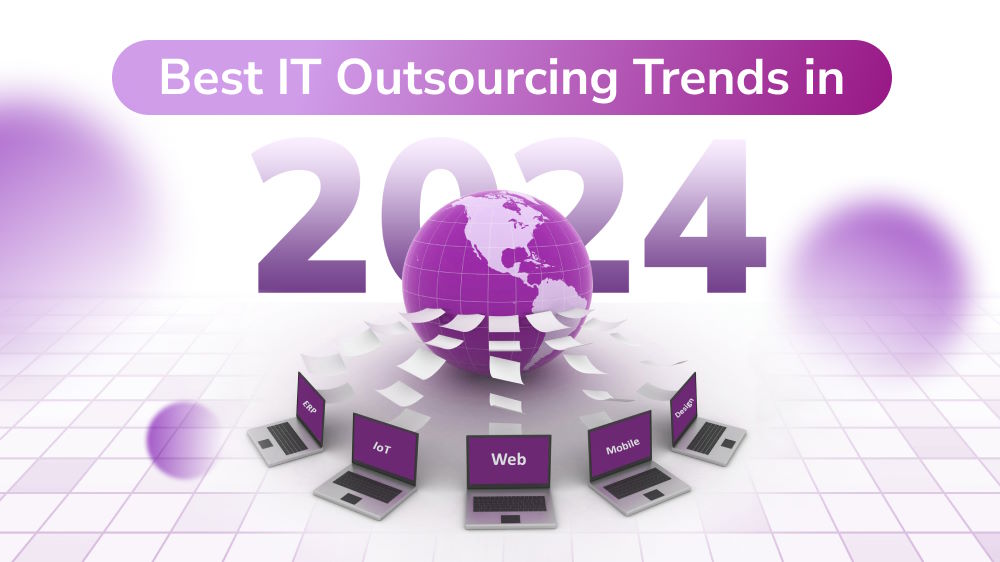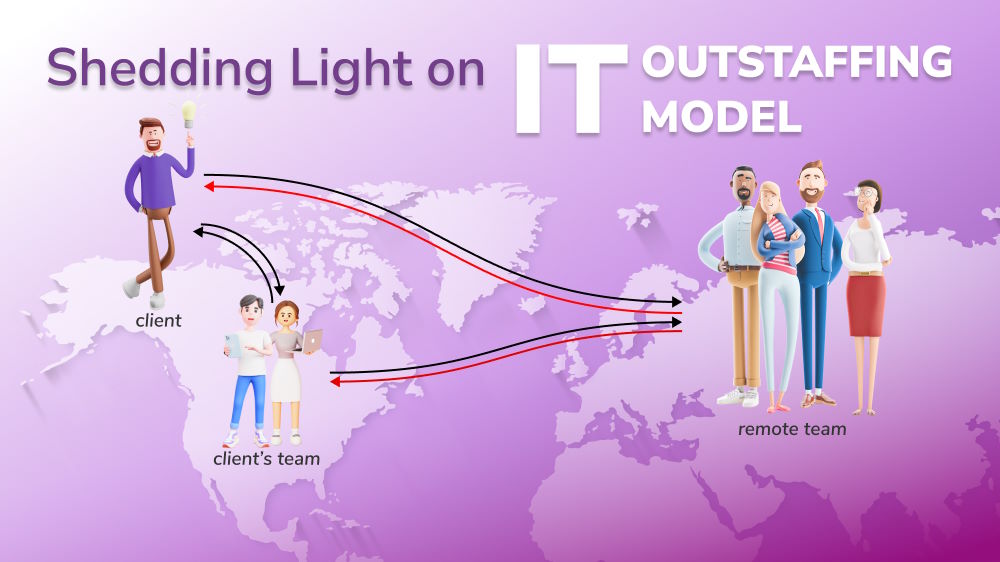What Are the Average Offshore Software Development Rates by Country?
Outsourcing software development can save you money, but how much should you really be paying? Understanding global rates helps you avoid overpaying and find the best value.

Content Map
More chaptersThe first and most important consideration regarding offshore software development is the cost. Many businesses turn to software outsourcing for its promises of being cost-effective – but is this always the case? Do the dollars saved vary depending on where your partner is based? If there is a certain variety of rates depending on the country or region, what do those differences look like? What factors contribute to the final cost of offshore development rates? How do you minimize risk with offshore software development rates? Are there any other factors you need to be aware of when outsourcing?
By answering all these questions, this article will provide practical advice and a holistic understanding of offshore software development rates to make the most sustainable, cost-effective, long-term decision.
Key Takeaways:
- Offshore software development is hiring a team in another country to build or maintain software, often to save costs and access skilled talent.
- The offshore software development cost depends on numerous factors, including location, a company’s reputation and experience, tax systems, and the project’s complexity.
- In general, outsourcing rates in Western countries are higher (ranging from $45 to $300 per hour) than the ones in Eastern Europe, Asia, and Africa ($21 to $149 an hour).
- By taking a closer look at the most outstanding outsourcing spots in Asia (Vietnam, the Philippines, India, and China), this article examines the pros and cons of each location.
- While outsourcing is a practice that aims to save businesses money, without proper planning and clear policies, companies might end up paying too much while receiving subpar quality results.
- When choosing an offshore development destination, businesses should look beyond costs. They should also research the tech industry, time differences, and cultural compatibility of the destination country.
What Is Offshore Software Development?
Offshore development is the practice of contracting out software creation, maintenance, or specific tasks to a team or company in another country. Businesses choose this approach to access specialized talent and advanced technologies, which often lower labor costs compared to hiring locally. Offshore development centers handle coding, testing, and support, enabling companies to focus on core operations while benefiting from global expertise.
Cost Trends in Offshore Software Development

It’s apparent that the pandemic has propelled digitization across industries, especially in the technology sector. Though outsourcing is now a widely adopted modern business practice to save costs and access a large talent pool and the latest technology, it wasn’t always this way. In 2011, Forbes once wrote an article stating that the age of outsourcing is over and that businesses are favoring specialized in-house teams. The U.S. businesses have in fact moved away from outsourcing for a while. That is until the pandemic happened.
This global event has caused major disruption in the company’s operations. This, paired with the spike in the need for digitizing, has pushed the cost of IT outsourcing upwards. At the same time, however, it also reinforced the benefits of outsourcing – a strong strategy promoting resiliency and agility.
In today’s post-pandemic world, we’re witnessing industry-wide digitization. Innovative technology is introduced almost every other month. Outsourcing, including offshore outsourcing, has become a well-adopted practice in the industry. Organizations have recognized that its benefits go far beyond cost savings – it’s also an effective strategy for driving innovation.
Average Offshore Software Development Rates by Region and by Country
The cost of offshore software development varies significantly across regions and countries due to a range of factors, including labor market conditions, the availability of skilled developers, tax policies, and more. Businesses that want to outsource must consider these factors to ensure they are getting the best value.
In the following section, we will explore these cost-driving factors in detail. But first, here is a high-level summary of the average offshore development rates across different regions, along with a breakdown of rates in some of the most popular outsourcing destinations within each region.
| Region | Average Rate (USD) per hour | Example Countries and Average Rates |
|---|---|---|
| North America | $50 - $300 | USA: $70 - $200 |
| Canada: $50 - $180 | ||
| Latin America | $25 - $105 | Mexico: $30+ |
| Brazil: $40+ | ||
| CArgentina: $50+ | ||
| Oceania | $60 - $200 | New Zealand: $100 - $175 |
| Australia: $60 - $199 | ||
| Western Europe | $45 - $300 | United Kingdom: $50 -$100 |
| Germany: $50 - $150 | ||
| Switzerland: $100 -$150 | ||
| Eastern Europe | $25 - $108 | Ukraine: $30 -$55 |
| Poland: $35 - $55 | ||
| Hungary: $40 - $50 | ||
| Belarus: $35 - $50 | ||
| Central Asia/ Western Asia | $25 - $49 | Kazakhstan: $25 - $49 |
| Tajikistan: $10 - $40 | ||
| East and South Asia | $21 - $82 | Vietnam: $20 - $40 |
| Philippines: $25 - $50 | ||
| China: $50 - $80 | ||
| India: $20 - $40 | ||
| Sri Lanka: $20 - $45 | ||
| Pakistan: $25 - $40 | ||
| Africa | $25 - $149 | South Africa: $30 - $60 |
| Nigeria: $30 - $55 | ||
| Ethiopia: $20 - $55 |
Factors Affecting Offshore Software Development Rates

As we’ve mentioned earlier, multiple factors make up the final price of offshore development rates. Sometimes the price differences can be drastic. Understanding the price factors helps one make sense of cost discrepancies, leading to a more confident and informed decision.
Location
The location is the most noticeable factor that creates such a price gap. North America, for example, has a much higher average rate than Southeast Asia. This is due to the different living standards, labor costs, and market saturation.
Company’s Profile
A company with a more established presence in the industry will typically charge higher. These businesses have a good reputation, a proven record of successful projects, positive testimonials, and good reviews on platforms like Clutch.
Expertise
It is often advised to search for business partners who have had previous experience in the industry you’re operating in. If your outsourcing partner has years of experience under their belt, the skill you require is a niche, or if the tech you wish to apply is the latest one, rates will likely go up.
Taxes
Just like any other service, software products are subjected to taxes. In some countries, the product is subjected to value-added tax (VAT), which may increase the overall outsourcing cost. For example, in India, software as a Service (SaaS) products taxed under GST typically attract a rate of 18%. However, some countries also implement tax incentives to attract more potential businesses. In Vietnam, software products are subjected to 0% VAT, and companies can receive corporate income tax (CIT) incentives for up to 15 years, which include:
- 10% tax rate for up to 15 years
- 4 years of tax exemption
- 50% tax reduction for the following nine years
Project Complexity
The more intricate a project is, the higher the rates are going to be. Let’s take a basic mobile app or simple website as an example. These basic projects often require common tech stacks and little customization. Skills required for the project are often readily available as well.
More complex ones, like projects with custom web apps or API integrations, often have a longer development cycle and require more specialized skills. As a result, billing hours will be higher.
Pricing Model
The pricing model you select for the project will affect the final rate of the project. The three most common pricing models you’ll encounter are time and material, fixed price, and dedicated team.
- Fixed-Price Model: In this model, you pay a predetermined amount for a project with a clear scope, deadline, and deliverables, making it ideal for small projects with predictable requirements. While this model offers cost certainty and requires little management, it lacks flexibility, making changes difficult once development starts.
- Time and Materials (T&M) Model: In this model, clients pay for actual work hours and resources used. This model best suits long-term projects with uncertain scope, allowing flexibility to adjust features, scale resources, and adapt to market changes. However, it requires active involvement from the client, and costs can fluctuate, making budget control more challenging.
- Dedicated Team Model: This model provides a long-term, remote workforce that works exclusively on your project. This model suits businesses needing ongoing development or niche expertise. It reduces hiring costs, ensures deeper project familiarity, and allows scalability. However, managing a remote team requires effective communication and careful planning, making it unsuitable for short-term projects.
Pros and Cons of Top Asian Offshoring Destinations
Southeast Asia has emerged as a rising star on the offshore outsourcing map. The region’s growing tech ecosystem, government support of the IT sector and increasing investment in digital infrastructure has turned it into a top choice for companies who want a cost-effective solution without compromising quality. Countries like Vietnam, the Philippines, India and China offer a large pool of talented developers and professionals at a lower cost.
| Country | Popular Tech expertise | Pros | Cons | Overview |
|---|---|---|---|---|
| Vietnam (Large tech hub: Ho Chi Minh City, Ha Noi, Da Nang) | Python, Java, JavaScript, C language, PHP, .NET | Tax incentives Socioeconomic stability Young and educated population The presence of tech giants (LG, Samsung, Microsoft) | Potential time zone differences Lower English proficiency | Vietnam has been making noise on the outsourcing map. In the upcoming years, Vietnam’s IT outsourcing market is anticipated to rise significantly. Forecasts indicate that this industry will generate $792.60 million in revenue by 2025. |
| Philippines (Manila, Bonifacio Global City, Cebu City, Davao City) | PHP, ASP.NET, Ruby on Rails | Strong English proficiency Large talent pool Cost-effective | Strict labor laws Potential business disruptions due to natural disasters | With a large labor force, the Philippines has implemented policies to attract foreign investment, including in the tech industry. By 2025, the Philippines’ IT outsourcing business is expected to generate an astounding $811.30 million. |
| India (Bangalore, Chennai, Mumbai, Kolkata) | Java, C++, Python | Good English proficiency Good outsourcing infrastructure Cost-effective Experience in the outsourcing world | Quality control Unfavorable tax policies Unstable politics | Software outsourcing in India started way back in the 1990s, making it an established tech hub. According to research based on five years of historical performance, the India IT outsourcing business is worth $584 billion. |
| China (Beijing, Shanghai, Shenzhen) | Python, Algorithm, Functional Development | Cost-effective Strong tech ecosystem Advanced infrastructure | Quality control Concerns of Intellectual Property Strict internet regulations (Great Firewall) | China has long been a famous outsourcing spot for many industries, not just software outsourcing alone. By 2025, the Chinese IT services market is projected to generate $84.15 billion in revenue. |
Are You Overpaying for Software Outsourcing Services?

It’s widely accepted that outsourcing services is a cost-effective strategy. However, this isn’t always the case - especially when you unknowingly pour expenses into unfavorable vendor practices or hidden inefficiencies. Failing to recognize the red flags, you could end up with poor deliverables or even security risks. To ensure you’re making the most out of your investments, keep an eye out for the following red flags.
- Little control over vendor staff: Outsourcing often means you’re giving up part of your power of control in the development process. However, if you have no say in the employee’s value or their recruitment, it’s a troubling sign that you’re not getting the best value out of your investments.
- Handing off tasks without in-house oversight: Outsourcing is a popular business practice not only for its ability to save money but also for its access to technical expertise. However, if you outsource weaknesses to a third party without proper in-house supervision, you may receive subpar results.
- Data privacy and security concerns: You should implement data privacy and security measures at every development stage, not as an afterthought. Waiting until the project nears completion can lead to costly vulnerabilities that require extensive time and resources to fix. Neglecting data privacy doesn’t just put your investment at risk - it risks user trust, regulatory compliance, and your company’s reputation.
- Overpromising and underdelivering: This should be an early warning sign that the vendor’s capabilities aren’t meeting expectations and that it’s smarter to spend your investment on more solid opportunities and trustworthy partners.
Reducing Costs for Offshore Development: The Best Tips
Being aware of the warning signs is a crucial step in using your financial resources smartly. The next step is to take deliberate steps to lower costs when you’re partnering with an offshore development team.
Plan in Advance
Outline every relevant detail in the software project – scope of work, timeline, team size, essential skill sets and tech stack, etc. The more specific and clear these details, the easier it is to plan your budget and resources. Avoid stepping into a project only having a vague idea of what you want – this often results in scope creeping, hidden fees, and an overall longer development process.
Choose Reliable Partner
This might seem like a piece of obvious advice – but you know what they say: Strong foundations lead to lasting success. A reliable partner will provide you with valuable insights and practical steps to reduce the cost. They’ll also protect your data and security and follow the timeline closely, as they don’t want to risk damaging their reputation.
Clear Communication
Establish clear communication channels and policies. Not having geographical proximity often and easily leads to misunderstandings. To ensure everyone is on the same page and stays in the loop, have meeting schedules during overlapping business hours. Make the most use of communication tools like Slack or Microsoft Teams. Check in regularly to make sure that your in-house team and offshore developers are working in sync and solving problems as they come up.
Implement Automated Testing to Catch Bugs Early
By integrating automated testing into the development process, teams can identify and address bugs early, preventing them from escalating later in the project. Automated tests can run continuously, reducing the time spent on manual testing and checking to see if new code lines introduce any bugs or functionality problems in the current system.
More than cost saving by not having to deal with costly issues in the later stages of the project, automated testing allows faster release cycles and a more reliable final product.
Allocate Resources Efficiently
Thorough planning means you can assign each task with the right skills and expertise. By leveraging each team member’s strengths, you’re minimizing delays and pushing the project forward steadily according to the intended timeline.
With the help of tools like Trello boards or Jira, you can make sure that no team member has too much work to do while the others are underutilized. Remember to regularly review the team’s capacity to prevent bottlenecks and shift members to more urgent tasks when needed.
Implement Agile Development Methods
The core idea of Agile methodology is breaking complex projects into smaller and more achievable tasks. Instead of delivering the product all at once, this method continuously reviews the project and refines its goals. This approach allows the team to identify issues during the early stages, reducing risks of costly rework. Popular Agile frameworks like Kanban or Scrum also encourage communication and collaboration between developers and relevant stakeholders to ensure everyone’s on the same page and the priorities remain aligned.
How to Choose a Software Outsourcing Destination
With so many outsourcing destinations available, it can be overwhelming to determine the right one for your software development needs. Worry not, as long as you keep the following key factors in mind. As long as you’re carefully evaluating factors such as developer rates, tech industry strength, time differences, and cultural fit, you’ll find a great offshore software development partner. Let’s dive in and explore each of these key considerations and ensure you make a well-informed choice for your next project.
Compare Offshore Developer Hourly Rates
Cost is often the top consideration when it comes to software outsourcing services. As most businesses aim to reduce costs, sometimes they use this as the only leading factor to determine which region or country to choose. While cost should definitely be a top priority, businesses shouldn’t rely on this factor alone. Talent availability and cultural compatibility (which we’ll discuss in detail later) are two other crucial factors to consider. Tech talent, especially specialized ones, is harder and harder to find. That’s why you need to check and make sure the region or potential partners have the tech skills you’re looking for.
In short, keep talent availability and hourly rates in mind while budgeting for your project.
Assess the Tech Industry by Region
Next, research the IT sector in the destination country. You can look at a few indications, including popular technical universities that developers graduate from, the popularity of the tech stack you need, and the number of developers on the market. If you find the region or country:
- has a well-trained workforce that ensures high-quality work and up-to-date technical skills,
- a large talent pool that gives you a better chance of finding the right expertise,
- and is the chosen outsourcing spot for many companies,
you’re on the right track. You need to do more research, however, if you’re looking for business partners that specialize in more niche tech like Scala or Elang.
Consider Time Zone Differences
Some believe that the optimal time zone difference is 1 to 2 hours. This is true in cases where you find constant communication a crucial part of the project.
When partnering with partners that have larger time zone differences, you can make use of the “follow the sun” model. This strategy ensures continuous progress around the clock by distributing assignments among teams in different time zones.
For example, during the daytime, a development team in Asia works on building features. When their workday ends, a team in Europe reviews the progress, tests the work, or continues development. This cycle repeats with teams in different time zones, ensuring continuous workflow, reducing delays, and accelerating time to market.
Evaluate Cultural Compatibility
Cultural fit might be a sensitive topic and sometimes confusing to navigate, but there are a few steps you can take to make working with an overseas partner a bit easier.
First, ask for feedback from business owners who have had experience of outsourcing to a specific region or country. With the resources the Internet and social media provide, this shouldn’t be too hard to figure out. Next, you can always directly reach out to the partner or owner of the destination country and ask questions regarding their approach to communication systems, taxes, legal issues, and so on.
While cultural compatibility is often overlooked, considering this topic will guarantee you and your partner have a comfortable and mutually respectful relationship.
Get the Best Offshore Development! Rates with Orient Software

Making sense of offshore development rates may seem like navigating uncharted waters, but armed with the knowledge of rate-determining factors and a general understanding of regional rate averages, you’re ready to set sail for your perfect outsourcing partner.
Budgeting for your offshore project doesn’t have to be a scary task. By conducting thorough research and maintaining consistent communication, you can keep your budget in check.
Should any questions remain unanswered, fear not! The Orient Software team is your trusted partner that can guide you through the intricate waters of offshore development rates. Reach out to us today!







